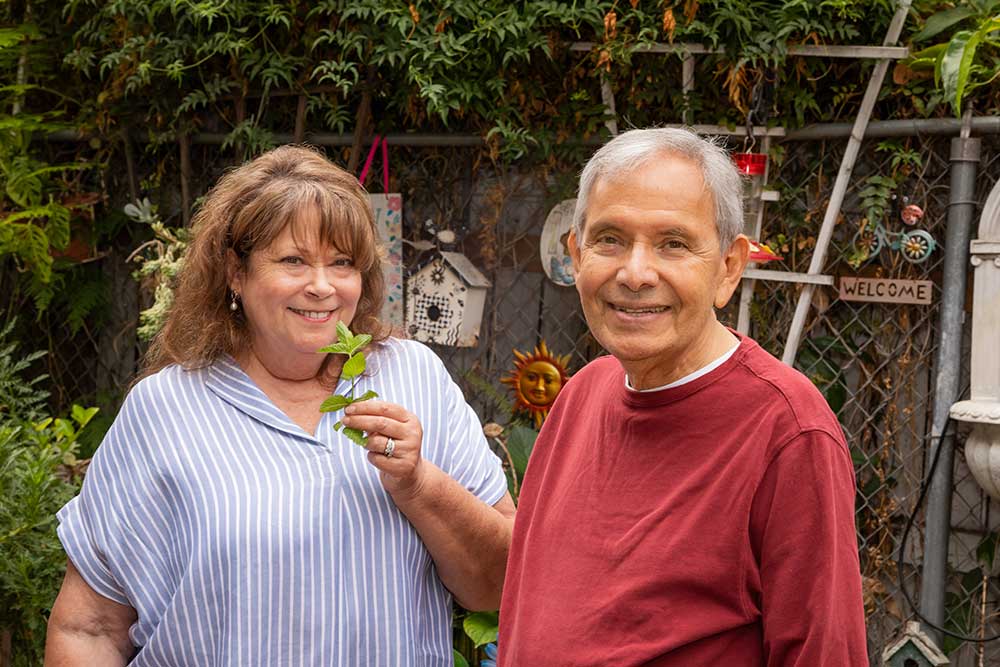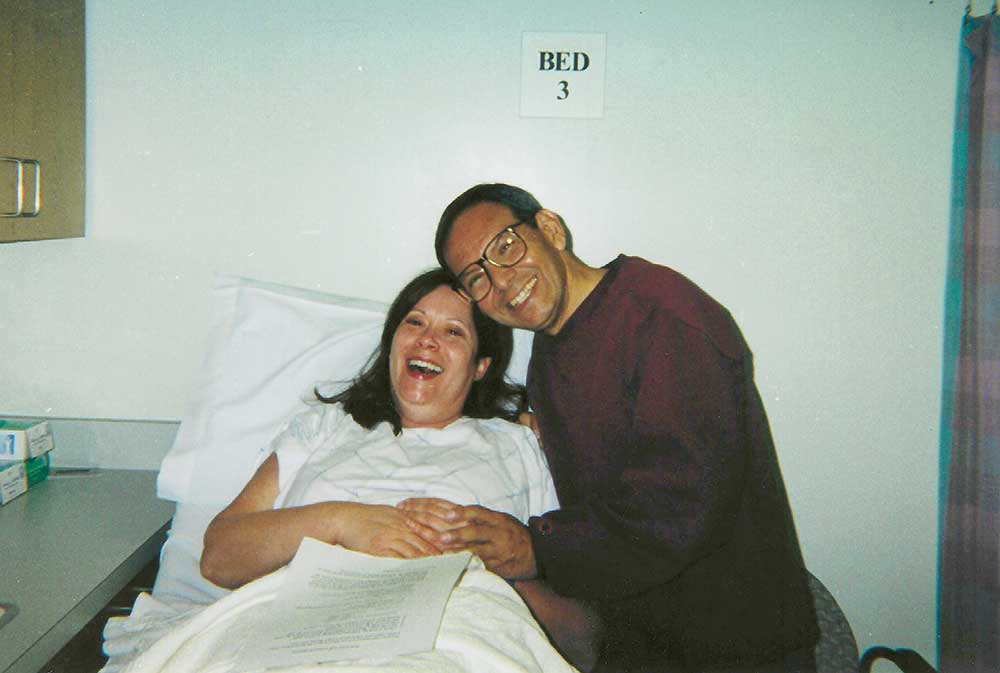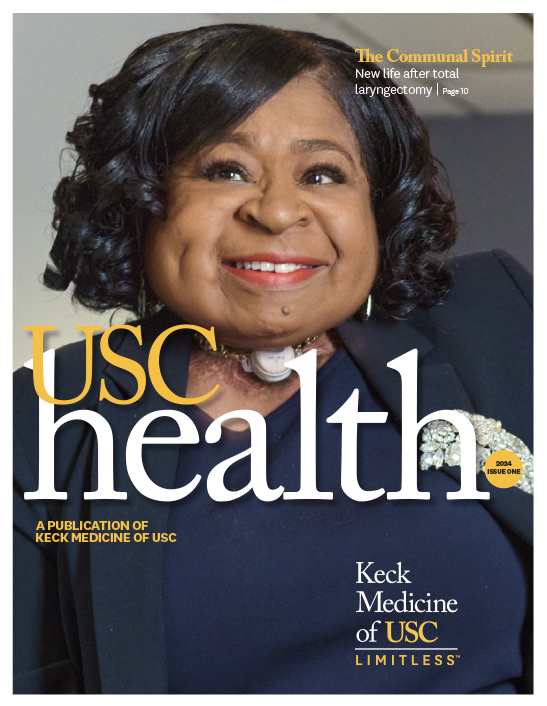
By donating a part of her liver, one woman gave someone else the gift of better health. Both transplant participants are still thriving after two decades.
When Walter Cervantes learned he needed a new liver in 2002, the last person he wanted to ask was his close friend Rosie Lewis.
Back then, living liver donation — in which a healthy person gives a portion of their liver to a patient in need — was a new concept.
Cervantes knew the procedure would be hard on Lewis, a close friend who worked with him as a fellow flight attendant.
“Rosie was one of my favorite flying partners,” Cervantes says. “I loved her sense of humor, her warmth and her kindness toward the passengers.”
Lewis regularly drove Cervantes to and from the airport and had bonded with his family — his wife, Elenda; their daughter, Jacqueline; and two older boys, John and Daniel, who both live with autism.
Cervantes, then 54, knew that Lewis would offer to donate if she learned of his illness. And, when she eventually did, she refused to take no for an answer.
This year, they celebrated the procedure’s 20th anniversary.
People who have joined the national wait list for a new liver in 2022
Living-donor liver transplants performed in the U.S. (August 2021-22)
Liver transplants performed at Keck Medicine of USC (as of July 2022)
Months for a living donor’s liver to fully regrow
Needing a liver transplant after hepatitis C diagnosis
During a flight in 1999, Cervantes was hit by debilitating abdominal pain. He was sent to a hospital after landing in Guatemala. The diagnosis was hepatitis C, which was rarely treatable.
Cervantes’ condition deteriorated over three years, until a transplant became necessary.
Although Cervantes was seriously ill, he was unlikely to receive a deceased-donor liver transplant due to national criteria used to prioritize patients in the United States.
His USC care team, which included Robert Selby, MD and Linda Sher, MD, recommended a living donor transplant. They told him that the liver, the only organ that regenerates, can grow back to normal size a few months after donation.
Key facts about living liver donation
In 1999, there were 14,709 patients in the United States waiting for a liver transplant. Only 4,527 cadaveric livers were available, which meant thousands of patients died waiting.
But toward the end of the 1990s, a few research hospitals began offering a novel option: transplantation from living donors.
“Keck Medical Center of USC was one of the pioneers of living-donor liver transplant, performing its first procedure in May 1999,” says Yuri Genyk, MD, co-director of Keck Medicine’s USC Transplant Institute and a member of Cervantes’ care team.
Patients who receive organs from living donors experience important postsurgical benefits, such as immediate organ function, decreased risk of rejection and increased longevity of the organ.
Of the 5,999 lives saved by liver transplant from January through August 2022, only 381 donations came from living individuals. Southern California suffers from one of the largest organ shortages in the country, according to Hyosun (Helen) Han, MD, medical director of Keck Medicine’s Living Donor Program. This is why Keck Medicine offers programs to educate and prepare would-be donors.

Undergoing liver transplant surgery
After Cervantes learned he’d need to find a living donor, he spoke to his colleagues to get the word out.
It didn’t take long for the news to reach Lewis. As expected, she brought it up to Cervantes on a ride home and offered to donate. Cervantes told her no, but she persisted, until he agreed.
When the day of the surgery came in March 2002, Lewis, then 46, went in on blind faith and a sense of adventure. The procedure took a tremendous toll on her body, and she required rest and help from loved ones before returning to work five months later.
Her selflessness moved Cervantes beyond words.
“There are no words to convey all the gratitude I feel for Rosie,” Cervantes says. “Without her, I would not be here.”
Our [living-donor liver transplant] program is one of the largest and most successful programs in the U.S. — as well as the only program in Southern California offering liver recipients this lifesaving option.
Yuri Genyk, MD, Co-Director, USC Transplant Institute
Life with a new liver
Cervantes faced a tougher recovery.
His posttransplant doctor, Jeffrey Kahn, MD, monitored him with regular blood tests and liver biopsies. Eventually, the care team confirmed that Cervantes’ liver health was excellent, and it has remained so for many years.
Seven years ago, Kahn — who is also medical director of the USC Liver Transplant Program at Keck Medicine — prescribed a new drug to fight hepatitis C. The drug eradicated the virus and cured Cervantes of hepatitis C, protecting his liver from future damage.
While newer resources are available to help transplant participants recover, Cervantes never recovered his former energy and had to retire from the airline industry. But he soon began volunteering at the South Pasadena Senior Center, which led to a role on the city’s senior commission and a job in public safety.
The innovations that aided Cervantes’ recovery were only part of the evolution of living liver transplants co-led by Keck Medicine.
“Our program is one of the largest and most successful programs in the U.S. — as well as the only program in Southern California offering liver recipients this lifesaving option,” Genyk says.
A friendship for life
Cervantes and Lewis have considered each other family ever since the procedure. She even got married at his house. While the pandemic has prevented the friends from spending time together, they regularly talk on the phone.
Lewis considers her experience a spiritual one that has connected her to Cervantes in a profound way.
“It’s like gaining a new family member when you’re old,” Lewis says. “You’re tied together.”
Topics


